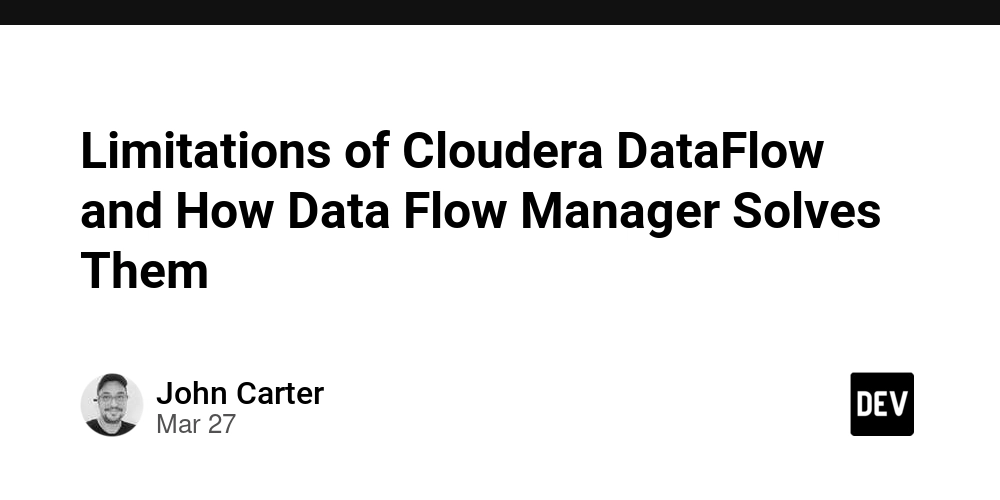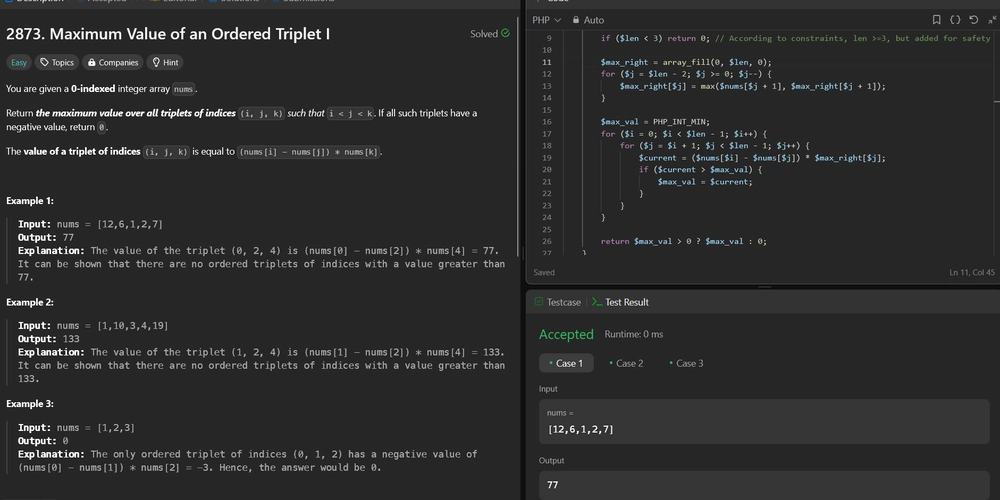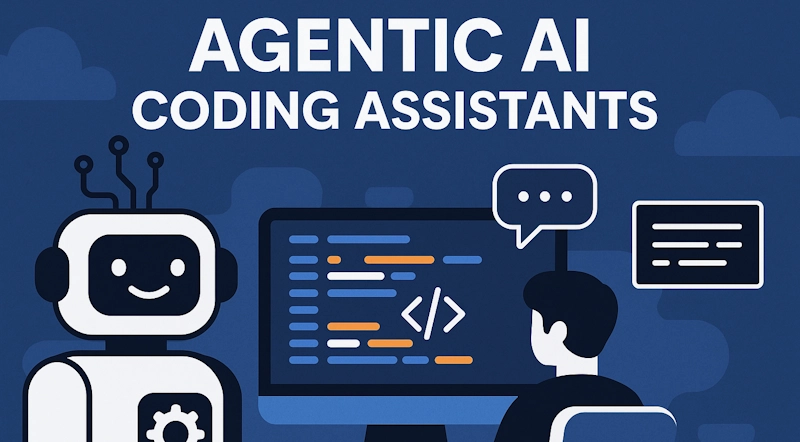Limitations of Cloudera DataFlow and How Data Flow Manager Solves Them
In a landscape where real-time data pipelines power everything from routine analytics to mission-critical operations, solutions built on Apache NiFi have become indispensable. Cloudera DataFlow aims to offer a unified, enterprise-grade NiFi experience. Still, organizations frequently encounter obstacles such as rising costs, slower innovation cycles, and dependence on external support. Meanwhile, Data Flow Manager emerges as a UI-driven CI/CD-style solution for managing open-source NiFi and data flows end-to-end. It addresses many of the challenges that enterprises face with Cloudera’s platform. In this blog, we’ll examine why Cloudera DataFlow’s limitations prompt a search for alternatives—and how Data Flow Manager effectively fills the gap for modern data-driven businesses. Top 5 Limitations of Cloudera DataFlow 1. Heavy Vendor Dependence Organizations often find themselves reliant on Cloudera for virtually every upgrade, configuration change, or feature addition. This dependence introduces bottlenecks—your team can’t make adjustments quickly without waiting for vendor approval or guidance. Over time, this restricts innovation and can stretch internal resources, particularly when routine tasks become gated by external processes. 2. Limited Flexibility with Proprietary Components Because Cloudera DataFlow wraps Apache NiFi within a proprietary framework, you’re often locked into the specific connectors, NiFi versions, and release schedule that Cloudera supports. If you need niche functionality or wish to experiment with emerging technologies not yet part of Cloudera’s roadmap, you may be left waiting—or paying extra for custom builds. 3. High Licensing and Operational Costs As data processing scales, so do license fees, support costs, and potential add-ons. Over time, especially for large deployments, these expenses can swell to the point where the total cost of ownership rivals or exceeds your available budget. Furthermore, unplanned usage spikes can lead to unpredictable bills, complicating financial planning. 4. Lack of Automated Deployment and Scheduling The solution typically lacks robust CI/CD-style automation for deploying or updating data flows. Without in-built scheduling, engineers resort to manual processes or custom scripts, which are error-prone and time-consuming—especially when pushing changes to multiple environments or clusters. 5. Slow or Limited Support During Critical Incidents Response times can vary based on your support tier, meaning some organizations don’t get real-time help when they need it most. In high-stakes scenarios—like a critical data pipeline outage—delays can lead to missed deadlines, disrupted analytics, or even compliance issues in regulated sectors. How Data Flow Manager Overcomes These Challenges Data Flow Manager is a UI-driven tool designed specifically for self-managed Apache NiFi (on-premises, private/public clouds, or hybrid environment). It brings additional layers of automation, security, and extensibility to NiFi—addressing each Cloudera DataFlow limitation in a straightforward, cost-effective way. 1. Independence from Vendor Lock-In By embracing open-source NiFi, Data Flow Manager grants full control over the infrastructure, freeing you from reliance on a single vendor for every upgrade or issue resolution. This autonomous approach enables your team to push updates, test new features, and fix bugs without waiting on external support channels. Benefit: Faster development cycles, minimal red tape, and the ability to tailor NiFi exactly to your use cases. Result: Increased agility as your organization evolves its data strategies, with minimal downtime or overhead. 2. Greater Flexibility with Open-Source NiFi Data Flow Manager builds on the vibrant Apache NiFi community, allowing you to incorporate community-driven features, custom processors, and emerging integrations at will. Since there’s no proprietary code locking you into a particular framework, you can continuously experiment with the latest connectors or your own custom logic. Benefit: Unparalleled adaptability to new data sources or complex transformations. Result: Future-proof data pipelines that keep pace with ever-shifting technology trends. 3. Substantial Cost Savings Switching to open-source NiFi with Data Flow Manager eliminates the high licensing fees typical of enterprise-grade solutions like Cloudera DataFlow. This translates to up to 75% cost savings for many organizations, especially at scale. Benefit: Reinvest resources into other critical areas, such as advanced analytics or machine learning initiatives. Result: A more balanced budget with clear visibility into ongoing costs, reducing financial risk. 4. Robust CI/CD-Style Automation Data Flow Manager stands out by offering UI-based, automated deployments—a capability often missing in Cloudera DataFlow. You can schedule new flows to deploy at specific times, automate rollouts across multiple cluster

In a landscape where real-time data pipelines power everything from routine analytics to mission-critical operations, solutions built on Apache NiFi have become indispensable.
Cloudera DataFlow aims to offer a unified, enterprise-grade NiFi experience. Still, organizations frequently encounter obstacles such as rising costs, slower innovation cycles, and dependence on external support.
Meanwhile, Data Flow Manager emerges as a UI-driven CI/CD-style solution for managing open-source NiFi and data flows end-to-end. It addresses many of the challenges that enterprises face with Cloudera’s platform.
In this blog, we’ll examine why Cloudera DataFlow’s limitations prompt a search for alternatives—and how Data Flow Manager effectively fills the gap for modern data-driven businesses.
Top 5 Limitations of Cloudera DataFlow
1. Heavy Vendor Dependence
Organizations often find themselves reliant on Cloudera for virtually every upgrade, configuration change, or feature addition. This dependence introduces bottlenecks—your team can’t make adjustments quickly without waiting for vendor approval or guidance. Over time, this restricts innovation and can stretch internal resources, particularly when routine tasks become gated by external processes.
2. Limited Flexibility with Proprietary Components
Because Cloudera DataFlow wraps Apache NiFi within a proprietary framework, you’re often locked into the specific connectors, NiFi versions, and release schedule that Cloudera supports. If you need niche functionality or wish to experiment with emerging technologies not yet part of Cloudera’s roadmap, you may be left waiting—or paying extra for custom builds.
3. High Licensing and Operational Costs
As data processing scales, so do license fees, support costs, and potential add-ons. Over time, especially for large deployments, these expenses can swell to the point where the total cost of ownership rivals or exceeds your available budget. Furthermore, unplanned usage spikes can lead to unpredictable bills, complicating financial planning.
4. Lack of Automated Deployment and Scheduling
The solution typically lacks robust CI/CD-style automation for deploying or updating data flows. Without in-built scheduling, engineers resort to manual processes or custom scripts, which are error-prone and time-consuming—especially when pushing changes to multiple environments or clusters.
5. Slow or Limited Support During Critical Incidents
Response times can vary based on your support tier, meaning some organizations don’t get real-time help when they need it most. In high-stakes scenarios—like a critical data pipeline outage—delays can lead to missed deadlines, disrupted analytics, or even compliance issues in regulated sectors.
How Data Flow Manager Overcomes These Challenges
Data Flow Manager is a UI-driven tool designed specifically for self-managed Apache NiFi (on-premises, private/public clouds, or hybrid environment). It brings additional layers of automation, security, and extensibility to NiFi—addressing each Cloudera DataFlow limitation in a straightforward, cost-effective way.
1. Independence from Vendor Lock-In
By embracing open-source NiFi, Data Flow Manager grants full control over the infrastructure, freeing you from reliance on a single vendor for every upgrade or issue resolution. This autonomous approach enables your team to push updates, test new features, and fix bugs without waiting on external support channels.
- Benefit: Faster development cycles, minimal red tape, and the ability to tailor NiFi exactly to your use cases.
- Result: Increased agility as your organization evolves its data strategies, with minimal downtime or overhead.
2. Greater Flexibility with Open-Source NiFi
Data Flow Manager builds on the vibrant Apache NiFi community, allowing you to incorporate community-driven features, custom processors, and emerging integrations at will. Since there’s no proprietary code locking you into a particular framework, you can continuously experiment with the latest connectors or your own custom logic.
- Benefit: Unparalleled adaptability to new data sources or complex transformations.
- Result: Future-proof data pipelines that keep pace with ever-shifting technology trends.
3. Substantial Cost Savings
Switching to open-source NiFi with Data Flow Manager eliminates the high licensing fees typical of enterprise-grade solutions like Cloudera DataFlow. This translates to up to 75% cost savings for many organizations, especially at scale.
- Benefit: Reinvest resources into other critical areas, such as advanced analytics or machine learning initiatives.
- Result: A more balanced budget with clear visibility into ongoing costs, reducing financial risk.
4. Robust CI/CD-Style Automation
Data Flow Manager stands out by offering UI-based, automated deployments—a capability often missing in Cloudera DataFlow. You can schedule new flows to deploy at specific times, automate rollouts across multiple clusters, and revert to previous versions if issues arise.
- Benefit: Minimal manual intervention, consistency across environments, and a significant reduction in deployment-related errors.
- Result: Faster, safer iterations on your data pipelines, leading to a more agile development process.
5. 24x7 Expert Support and Real-Time Monitoring
While Cloudera support can be beneficial, Data Flow Manager provides round-the-clock assistance dedicated to open-source NiFi environments. Moreover, real-time monitoring and alerts enable teams to respond proactively to any warning signs—often resolving potential bottlenecks before they cause downtime.
- Benefit: Continuous, highly responsive support that matches the urgency of mission-critical data flows.
- Result: Fewer disruptions, streamlined troubleshooting, and overall improved data pipeline reliability.
Additional Features that Elevate Data Flow Manager
Beyond addressing the key limitations of Cloudera DataFlow, Data Flow Manager brings extra functionality that enriches open-source NiFi deployments:
- Advanced Security with Role-Based Access Control: Granular RBAC ensures only authorized users can deploy, edit, or monitor specific flows.
- Audit Logs and Version Control: Automatic tracking of changes lets you quickly revert to stable iterations if new deployments cause issues.
- AI-Driven Flow Generation: Quickly generate common NiFi flows by describing your source, destination, and requirements in plain language.
- Real-Time Flow Analysis: Pinpoint bottlenecks and inefficiencies with a holistic view of your data pipelines, accelerating optimization.
Conclusion
While Cloudera DataFlow offers an enterprise-focused NiFi solution, its limitations—ranging from vendor lock-in and high costs to manual deployments and inconsistent support—can impede agility and drive up expenses. Data Flow Manager directly tackles these challenges by empowering organizations with self-managed open-source NiFi, complemented by CI/CD-style deployments, cost savings, and 24x7 expert support.
By making the switch to Data Flow Manager, you can achieve the best of both worlds—enterprise-grade features with minimal overhead and maximal freedom to innovate in an ever-evolving data landscape.














































































